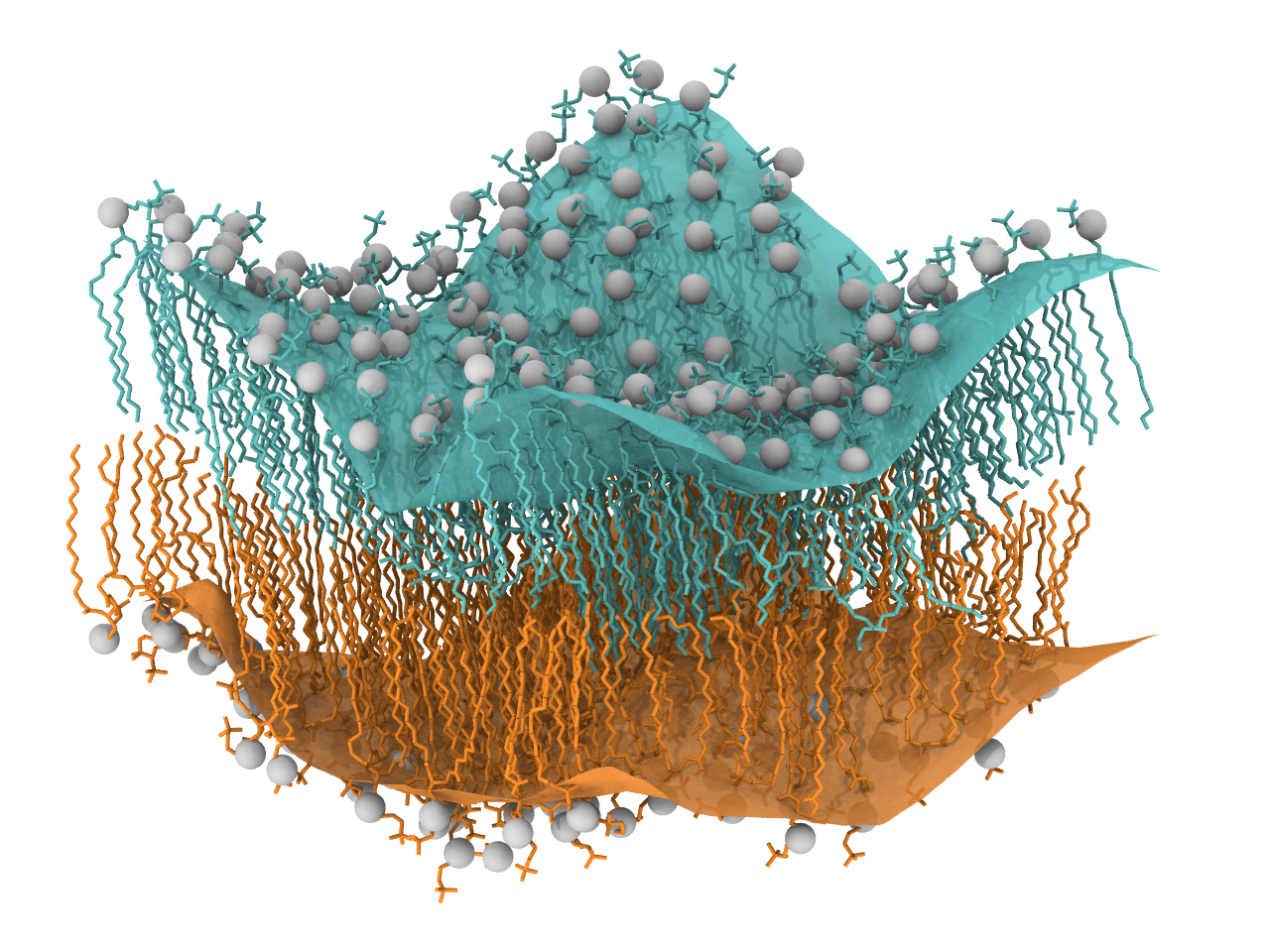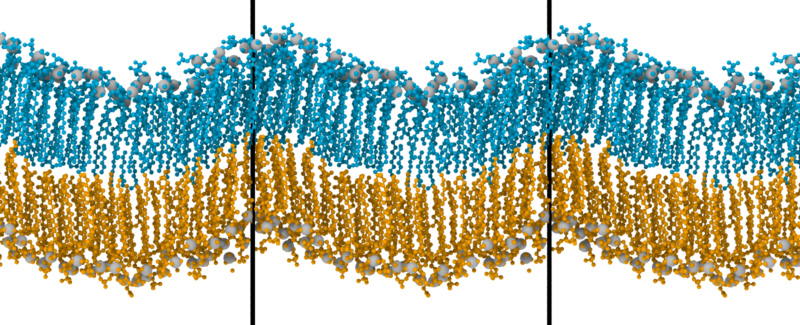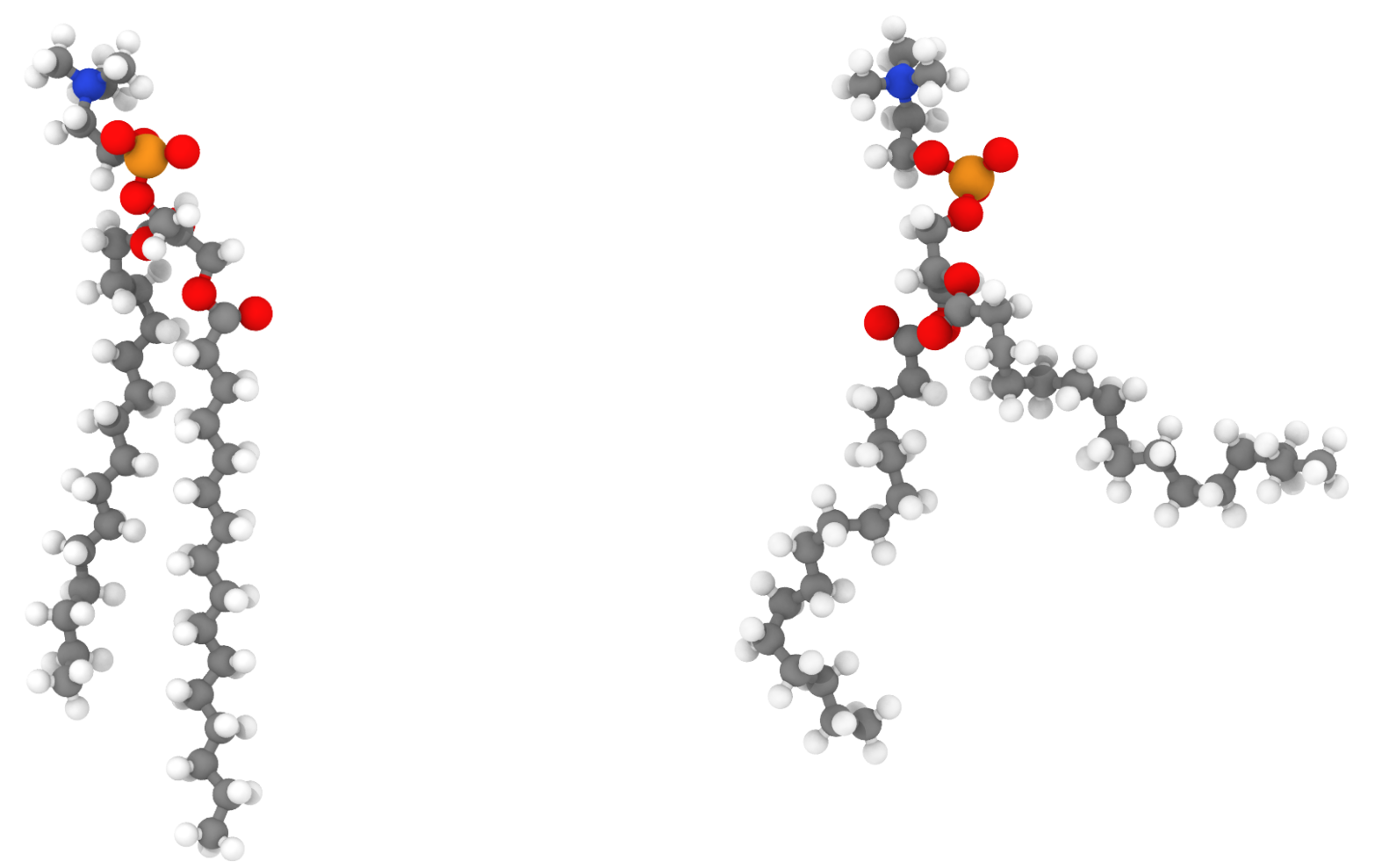
In collaboration with the Institut Charles Sadron (Strasbourg, FR), I am investigating the thermodynamic properties of lipid membranes generated by molecular dynamics (MD) simulations. My specific interest are the phase transitions and separations that can occur when the temperature of the system vary. Using Machine Learning to analyse the lipid configurations, we aim at describing complex lipid mixtures and phases using a two-state approach.
Description
Lipid phases
One of the remarkable property of pure phospholipids bilayers is to exhibit thermodynamic transitions, meaning that they can be found in several phases; from the dense structured gel phase at low temperature to the fully disordered fluid phase which forms above a sharp transition called the melting transition. Many other phases have been identified in the last decades, such as the corrugated ripple phase appearing between the gel and fluid phases of phosphocholine (PC) lipids, or the ordered liquid phase formed by the presence of an important amount of cholesterol in the membranes.

We investigate thoroughly these different phases via MD simulations in order to fully characterise the lipid membranes simulated. This allow us to track interactions between various types of molecules, such as pollutants, and the membrane; and analyse how these molecules are able to modify the phase composition of the lipid membranes.
Machine Learning
To analyse the phases of the individual lipid composing a cell membrane, we decided to rely on Machine Learning (ML) analysis. Our key concept is that the configurations of lipid molecules is expected to be radically different from the elongated densely packed gel phase to the randomly oriented fluid phase. ML analysis have been for long proven critically efficient on differenciating objects by their appearance, which we tried to apply here to lipids.

Our first codes were found extremely efficient at differentiating lipid phases (Check the section Related publication(s) below), with an average score of 95% for most of the lipids used in all-atom. We are looking for different way to proceed, especially to unify all models and lipids types.
Collaboration(s)
This project is conducted in close collaboration with Drs. Celine Ruscher, Olivier Benzerara and Fabrice Thalmann from the Institut Charles Sadron (CNRS, Universite de Strasbourg, FR). Our work are often supported by Drs. Carlos M. Marques and Adrien Gola, also from the Institut Charles Sadron, and by Dr. Tiago Espinosa de Oliveira (BR).
Related publication(s)
-
Walter et al., Ripple-like instability in the gel phase of Phosphocholine membranes at finite size, Submitted to BBA Biomembranes, March 2021.